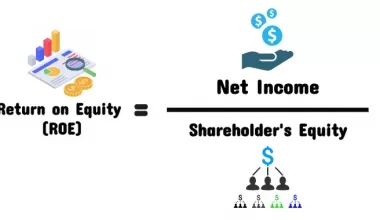Prior to releasing a product or service, it is crucial to have a firm grasp on what features consumers will value most. With so many options available, it can be tough to determine which aspects of a product or service are most important to consumers. Nonetheless, some top executives employ conjoint analysis to better understand their customers. Conjoint analysis is a method of marketing research and statistical analysis used to ascertain the features and benefits that customers find most useful in your offerings. If you’re a TV maker, for instance, you might wonder what features your buyers care about most. In order to provide customers with the features they care about most, conjoint analysis can be used to assign a monetary value to each one. In this article, we will explore how to do conjoint analysis, its pricing and examples.
What is Conjoint Analysis?
Conjoint analysis is an efficient and advanced research analysis method that utilizes surveys to better comprehend decision-making processes. Every day, we make decisions that may or may not involve trade-offs. Choosing a laundry detergent or booking a flight are both examples of complex decisions that include mental conjoint research.
One of the best approaches for eliciting preferences from buyers is this analysis. Afterward, statistical analysis converts the data into a number. Nothing else can compare to it when it comes to determining the quality of a service or product.
According to Jarvis, businesses can learn more about their customers’ mental processes behind purchasing decisions by using a technique called “conjoint analysis,” in which customers are asked to make trade-offs between different product attributes. Also, businesses might conduct a market analysis to see how customers would react to the features they’re considering sacrificing.
Optimization Group, a marketing research and analytics organization, states that the premise of this analysis is that the relative values of a product’s or service’s attributes can be more accurately measured when they are considered jointly as opposed to individually.
According to the Optimization Group, “it is crucial to understand how markets value different parts of your products and services” when running a firm. “By figuring out what features clients are ready to pay more for, you can optimize product development and set prices accordingly.”
The most effective method of conducting this analysis is not only to reveal which aspects customers value most but also to allow companies to foresee the products and services their customers would be most interested in purchasing.
What Are the Different Types of Conjoint Analysis?
Here are different types of conjoint analysis you can use in your everyday business and marketing.
#1. Choice-based Conjoint Analysis
The most popular type of conjoint analysis is the Choice-based conjoint analysis (CBC), also known as discrete-choice conjoint analysis. Respondents in a choice-based conjoint study rate their preference for various full-profile ideas. This process repeats, selecting 3-5 full profile ideas.
Furthermore, the idea is that this type of decision-making exercise will replicate real-life shopping habits. By weighing the pros and cons of each option, the relative importance and preference of the attribute characteristics and levels can be quantitatively determined. Depending on the number of features and levels, this analysis can be conducted. An experimental layout is essential for preventing respondents from growing weary because that figure is usually high. Qualtrics allows us a great deal of leeway in terms of experimental designs within the conjoint survey.
Good estimations of the significance of the features, especially in terms of pricing, can be obtained from the results of a Choice-based analysis. The analysis can estimate each level’s value and the best product configurations. Simulators show package choice share, preference, and value (a surrogate for market share).
#2. Adaptive Conjoint Analysis
In adaptive conjoint analysis, users’ preferences are used to inform how they are presented with sets of options to select from. However, t his modification makes the conjoint exercise more productive by focusing on the most appealing aspects and excluding questions on less appealing aspects. The packages presented here are all more cost-effective than their competitors and will produce “smarter” results.
As a result of its ability to keep survey participants interested and involved, adaptive analysis often yields higher-quality responses. It shortens the survey’s total time commitment without sacrificing the quality of the metrics and simulations produced by this analysis technique. Several options exist for customizing the conjoint scenarios for each responder. The most crucial stages of a feature’s design are typically used. Also, the poll adapts to the response to each package being evaluated in real-time, making the next item more relevant. In addition, hybrid Conjoint Analysis is a technique that allows you to use both complete profile and feature evaluation approaches.
#3. Self-Explicated Conjoint Analysis
Self-explanatory conjoint analysis is an easy-to-implement method that yields insightful results without the need for developing full-profile notions. It is a hybrid strategy for assessing multiple product features simultaneously. This analysis model separates apart the preferences for individual levels of features rather than for a group of qualities.
Even though this method is distinct from the others, it nonetheless achieves the same result—accurate estimates of preference utilities.
Several conjoint methods, including heuristic reasoning and statistical analysis, are unnecessary in self-explanatory conjoint analysis. The findings are comparable to or even better than those obtained with full-profile methods, and the method requires less effort on the part of the respondent. Self-explained analysis has some restrictions, such as not allowing bundles of attributes to be traded for one another or for a different price. In addition, there are better conjoint analysis models to use when the responder always chooses the lowest price.
#4. Full-Profile Conjoint Analysis
In full-profile conjoint analysis, the participant is presented with a significant number of detailed product descriptors. The examination of these bundles allows for the extraction of explicit details of each customer or respondent. A well-liked method for calculating the value of a characteristic is through full-profile conjoint analysis. However, full-profile conjoint tasks involve developing and presenting a variety of product descriptions (or even different actual products) to the respondent for the purpose of eliciting acceptance or preference ratings.
In a fractional factorial experimental design, each product profile is a factor, and the incidence of one feature is matched with the occurrence of every other attribute. Also, the researcher can evaluate the respondent’s utility at different levels of each characteristic by manipulating the attribute pairings. Respondents indicate their preference or probability to purchase in a rating activity. Although a wide range of traits and gradations can be examined using conjoint analysis, it is most effective when only a small to moderate number of profiles are shown to respondents. Qualtrics’s sophisticated features use experimental designs to cut down on survey evaluation questions. Full-profile conjoint surveys produce results and analyses that are consistent with those of other conjoint models.
Is Conjoint Analysis a Regression?
It is an extension of multiple regression analysis that emphasizes the participant’s rankings. It’s useful for pinpointing the perfect balance of characteristics in a final offering. Participants rank feature bundles from most desirable to least desirable based on their ratings or rankings.
Examples of Conjoint Analysis
Examples of conjoint analysis would be a survey in which respondents were given the option of two computers that differed in price, screen size, and processing speed. The researcher can learn what characteristics are most significant to respondents and how alterations to those characteristics might affect their preferences through an examination of the responses.
A second use case would be to present clients with a choice between two products, say, two types of toothpaste. Products can be indistinguishable from one another excepting some distinguishing factors, such as cost or aroma. Businesses can learn what customers value most by observing which products they buy more frequently. Here are the 2 basic places examples of conjoint analysis applied.
#1. Conjoint Analysis Healthcare
Interdependent evaluation is the evaluation of a person’s wants and requirements in the context of receiving medical care, with the ultimate goal of enhancing such care. Conjoint analysis has been lauded as a powerful tool for incorporating patients’ priorities into every stage of the healthcare delivery process, from individual interactions like consultations to system-wide initiatives like service design.
#2. Conjoint Analysis Economics
The economic field finds several applications for conjoint analysis. In general, organizations use this resource to improve the quality of their marketing, product development, pricing, and other monetary decisions. Coupling different “deals” with prices, conjoint analysis can help determine what a customer values most. The company can then maximize the product or service it provides, the price it sets, and the revenue it generates.
What Is the Application of Conjoint Analysis?
There are several ways in which a corporation can put the information gained through conjoint analysis of product characteristics to use. Aside from influencing pricing and sales and marketing strategies, the conjoint analysis also influences R&D initiatives. Here is the application of conjoint analysis.
#1. Conjoint Analysis in Pricing
In conjoint analysis, users are asked to compare characteristics side by side to establish their relative importance. Customers’ monetary valuations of a company’s products and services features are useful information for setting prices.
If a software company believes it can scale its business by capitalizing on network effects, it may choose to offer its product to consumers at no cost under the so-called “freemium” model. Conjoint analysis may lead the company to impose a paywall on a feature people value most.
Therefore, conjoint analysis is a great tool for learning how different characteristics of a product affect consumers’ willingness to spend. In addition, a customer’s willingness to pay for additional features can be gauged in this way.
#2. Conjoint Analysis in Sales & Marketing
A company’s marketing and sales strategies can also be informed by conjoint research, not simply its price approach. When a business has a firm grasp of its consumers’ priorities, it may use that information to its advantage in the form of advertising, marketing text, and special offers.
In contrast, a business may discover that its clients place varying amounts of importance on various qualities. Conjoint analysis can be a useful tool for dividing customers into groups with shared interests and preferences so that messages can be tailored to each group.
Via conjoint analysis, a chocolate e-commerce site, for instance, might learn that buyers care most about two factors: product quality and the fact that a portion of every purchase goes toward funding environmental sustainability initiatives. Afterward, the business can tailor its communications to each group and better win them over.
#3. Conjoint Analysis in Research & Development
A company’s R&D pipeline can also benefit from conjoint analysis. The insights can help decide which product changes to prioritize or even whether to create a new product.
Take, for instance, a smartphone maker who uses conjoint analysis to learn that buyers prioritize huge displays over any other feature. The data suggests that investing in the creation of larger screens would be the most efficient use of the company’s R&D funds. But, if further research shows that client interest has switched to another aspect, say audio quality, the corporation may adjust its product development priorities accordingly.
Conjoint analysis can also help businesses determine which aspects of their product or service customers value the most. Going back to the mobile phone illustration: The number of parts that can fit within a smartphone is limited. Based on consumer feedback, certain phone functions may be included or omitted from the final version.
In 2016, Apple did away with the iPhone’s headphone jack so that it could make room for additional features. The lack of a headphone jack was likely because to market research showing that purchasers value other features more.
How to Do Conjoint Analysis
To carry out conjoint analysis here are some steps that should be carried out.
- Understand the issue facing the company.
- Form research questions.
- Select a method of conducting surveys.
- Learn as much as you can.
- Clean data
- Check the numbers.
- Be ready to give a presentation by preparing ahead of time.
- Taking the necessary business steps.
Pricing Conjoint Analysis
Everybody understands how crucial it is to set a fair price. After all, the cost may be a powerful marketing tool. For this reason, the most effective strategy for achieving optimal product pricing is to conduct pricing research via conjoint analysis.
Furthermore, by setting reasonable prices, you may cash in on the value and profits your company has created. So, how do you settle on a reasonable price for a product or service?
In-market pricing research studies allow you to get sales data from real customers by testing out various pricing strategies. There’s also the possibility that the competition’s actions throughout your market test will throw off your price strategy.
We can calibrate the ideal price using a database of prices and sales volume for your product and competitors.
Yet, it’s not quite that easy. Predictive models that can zero in on the best price points for maximum revenue or profit are difficult to establish from existing data because there aren’t usually enough price changes that can be isolated. Also, read Pricing Analysis Techniques: Detailed Guide to Price Analysis.
The question now becomes, how can we determine the most suitable selling price?
Conjoint analysis has entered the field of price analysis.
What are the Advantages and Disadvantages of Conjoint Analysis?
It is a statistical method used in market research to ascertain how consumers would place a value on the many features, perks, and functions that make up a product or service. The goal here is to ascertain, from the responses, which subset of available characteristics is the most often recognized.
This strategy involves presenting respondents with a predetermined group of goods or services. It will examine the preferences of respondents in order to infer the value placed on various features of the products. Such implicit values can be put into market models to better predict sales, market share, and profits.
While conducting a conjoint analysis, it is common practice to first conduct a marketing research survey to collect the necessary data. But, with well-structured data or a configurator from a test market experiment, conjoint analysis can also be useful.
In a nutshell, you may learn a great deal about the industry and the perceived worth of your services or products from the perspective of your responders. This is displayed on a chart depicting attribute levels alongside the utilities that ought to be computed for those levels.
Here are some of the advantages and disadvantages of using conjoint analysis.
List of Advantages
#1. Profitability of a Brand
When comparing the relative worth of several brands, conjoint analysis is the ideal strategy to use. Conjoint analysis, in contrast to other approaches of measuring brand equity, should yield data on the relative strengths and popularity of various brands in relation to varying product pricing and characteristics.
If the bulk of your target audience is price-conscious, having a resounding brand name alone might not cut it. It’s also feasible to want a feature set that’s substantial enough to cancel out any financial cost associated with building up a brand. Yet, in conjoint analysis, it is crucial to estimate how clients choose between various features, pricing, and brands.
#2. Provides Better Purchasing Choices
Participants can make a “none of the above” selection when asked how they plan to proceed with a purchase. One option is to simply leave without making a purchase. You can incorporate this response into the model and take it into account when calculating utilities in a choice-based conjoint analysis.
#3. Aids in Dividing up Markets
Conjoint analyses are an effective method for gauging customer appreciation of benefits. Most methods of market segmentation revolve around gauging customers’ actual and perceived value.
The success of your marketing campaigns depends on your ability to convince potential customers of the value of your products and services. You can also use it as a springboard for creating brand-new goods or reimagining existing ones to better deliver the benefits you envision.
#4. Estimating the Impact of Changes in Costs
One indicator of the market’s or a segment’s level of price sensitivity may be found with the help of utilities for price levels. The sensitivity of pricing that may change with respect to the brand name and the other attributes can be measured by calculating the interaction between price and the other variables. In this way, simulations may be run at varying price points to make it easier to estimate the impact of pricing changes on both your business and your competitors.
Disadvantages
#1. Difficult to Use
It is difficult to use for the investigation of product positioning since there is no technique for converting perceptions regarding actual characteristics to perceptions regarding a reduced set of features. This makes it tough to use.
#2. Lack of Verbalization of Opinions
When it comes to expressing sentiments regarding new categories, respondents have a difficult time doing so. In addition, they may get the impression that they are being coerced into thinking about matters to which they are not intended to devote a great deal of attention.
#3. Unreliable Readings on Market Share
Unfortunately, the market share estimates usually turn out to be inaccurate since they fail to account for the average number of items bought by each customer.
Conjoint analysis, in contrast to more conventional surveys, necessitates a higher level of respondent information processing. As a result, the conjoint exercise needs to be accessible to your respondents so that they can review the data at their own pace.
#4. Improper Evaluation of Factors
There is a possibility that the variables will be overrated or undervalued in the case that inadequately prepared research is carried out.
It is common practice for researchers to recruit participants for a collaborative study and have them complete a survey on paper or a computer at a central location. Since there are now more options for doing conjoint analysis in high-tech markets, among affluent consumers, and with enterprises, it will be simpler for most companies to carry out research of this kind.
Conclusion
In an effective marketing strategy, conjoint analysis can be used to gain insight into consumer tastes. Better decisions may be made about product features, price, and advertising when organizations have a firm grasp on what matters most to their target demographic. It’s true that doing a conjoint analysis can be a challenge, but the payoff for any company that cares about meeting the wants and needs of its clients is substantial. We trust that you now have a better grasp of the potential of conjoint analysis thanks to this article.
Conjoint Analysis FAQs
Who invented conjoint analysis?
‘Simultaneous conjoint analysis: A novel sort of fundamental measurement’ was published in 1964 by mathematicians Duncan Luce and John Tukey.
Paul E. Green and Vithala R. Rao’s 1971 “first comprehensive, customer” solution was “Conjoint Measurement for Quantifying Judgmental Data.”
Can SPSS do a conjoint analysis?
Yes, the IBM® SPSS® Conjoint module delivers conjoint analysis to help you better understand consumer preferences, trade-offs, and price sensitivity. It helps you understand how customers compare products and how product qualities affect consumer behavior.
Similar Posts
- PRIMARY MARKET RESEARCH: Meaning, Methods, Examples, Comparison
- MARKET RESEARCH METHODS: Top 10 Effective Research Methods For Any Business.
- Concept Testing Methods: Overview & Real-life Examples
- Fortune 500: Definition, Techniques, & Factors for Ranking
- PREDICTIVE ANALYSIS: What It Is, Example, Tools & Importance
- FIBONACCI RETRACEMENT: What It Is and How to Use It






